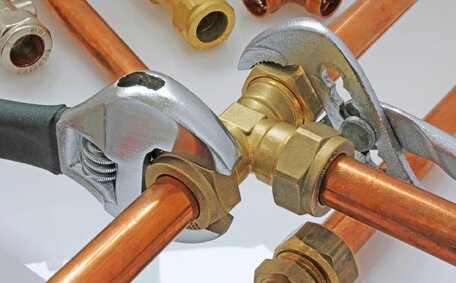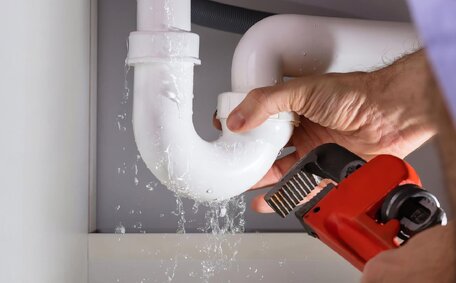What is Trenchless Pipe Relining?
Trenchless pipe relining updates damaged pipes without major excavation, providing a contemporary plumbing solution.
This technique inserts a resin-soaked liner into the existing pipe, then cures it to form a new pipe inside.
Growing in popularity, particularly in urban settings like St Ives, Sydney, this sewer pipe method counters extensive excavation, thereby preserving roads, landscaping, and infrastructure.
The relining process starts with a CCTV camera inspection to detect defects. Once the liner is in place, it is cured using hot water, steam or UV light, creating a seamless, watertight pipe.
Following this, a resin-impregnated felt liner is inserted into the existing pipe, typically through an inversion process.
Several trenchless relining methods exist, such as Cured-In-Place Pipe (CIPP) and spray-on pipe lining, with each relining method presenting distinct benefits. But in all cases, relining restores structural stability, flow capacity and pipe integrity at a fraction of the cost of full replacement.
The Step-by-Step Trenchless Relining Process
Pipe Inspection
Initially, a comprehensive CCTV pipe inspection is conducted, where a camera on a flexi-rod is inserted to locate breaches and other defects, helping technicians plan the relining strategy.
Pipe Cleaning
High-pressure water jetting is then employed to cleanse the pipe of debris, ensuring the resin-soaked liner adheres effectively in the next phase of drain pipe relining.
Liner Installation
A resin-rich felt liner tube is introduced into the pipe to begin the lining procedure.
Typically, the liner tube is constructed from materials like polyester, felt or fibreglass.
Liner Curing
The resin within the liner is then hardened using hot water, steam or UV light, a process that ensures a jointless and robust renewed pipe, reinstating flow and structural integrity.
At St Ives Plumbing, we take care to avoid environmental harm during trenchless relining. The minimal need for excavation preserves surrounding infrastructure and landscaping, clear advantages in urban settings.
Types of Pipes Suitable for Trenchless Relining
Trenchless relining is suitable for a wide array of drain pipe repair scenarios, capable of renewing almost any pipe material. The most common sewer lines suitable for this non-invasive repair technique include:
- Clay pipes - Relining offers a cost-effective sewer repair alternative to replacing old, cracked clay sewer pipes without the need for extensive excavation.
- Concrete pipes - Relining effectively restores concrete stormwater and sewer pipes afflicted by corrosion and cracks.
- Galvanised iron or steel pipes - Additionally, relining can protect and restore older metal water pipes that are susceptible to rust and corrosion.
- PVC - Even though PVC pipes generally require fewer repairs, relining remains a viable option for impaired or compromised segments.
The versatility of trenchless pipe relining makes it suitable for restoring pipes from small-diameter drain pipes to large main sewer lines. Common techniques such as CIPP are used to reline pipes beneath driveways and buildings, avoiding extensive excavations.
Pros and Cons of Trenchless Relining
Pros of Trenchless Relining
Trenchless relining boasts a number of key benefits when compared to the more disruptive traditional pipe replacement methods:
- Minimal excavation - By avoiding large trenches, it prevents major disruption and helps to protect and ensure no damage to your property, while safeguarding landscaping, infrastructure and the surrounding environment.
- Faster repairs - The relining process takes just one to two days compared to weeks for pipe replacement.
- Lower costs - Since relining eliminates excavation and reduces labour, it generally saves over 50% in costs compared to total replacement.
- Improved flow - The smooth new pipe interior increases flow rates and capacity.
- Enhanced longevity - The expected service life of a relined pipe is 50+ years.
Cons of Trenchless Relining
Potential limitations include:
- Higher upfront costs than some alternative repairs.
- Only feasible if the existing pipe retains enough structural integrity.
- Restricted to pipe diameters between 50-1200mm.
- Cannot resolve serious pipe misalignments or breaches.
Cost Comparison to Traditional Methods
Trenchless relining can provide major cost savings compared to traditional open-cut pipe replacement. By avoiding expensive excavation work, it reduces direct construction costs by 50% or more.
Labour is also minimised as no trenching or heavy machinery is required. Specialist relining teams can rehabilitate pipes 5-10 times faster than replacement crews.
Shorter projects mean much lower traffic control and infrastructure reinforcement expenses. And with little surface disruption, landscaping repair costs are also negligible.
Long-term, the 50+ year lifespan of relined pipes leads to decreased maintenance, while flow enhancements yield consistent operational savings.
St Ives Plumbing presents a detailed cost-benefit analysis to demonstrate trenchless drain relining’s exceptional value over an asset’s lifetime. While the initial investment may be higher due to the technique’s advanced nature, these costs are offset by the system’s extended lifespan and improved performance.
Lifespan of Relined Pipes
Trenchless relining significantly prolongs the life of pipes treated. The new seamless, jointless pipe created within the old one has an expected lifespan of over 50 years, akin to new pipe installations.
Once cured, the liner forms a strong bond with the inner walls of the current pipe, bolstering its structural integrity. The materials used, such as polyester or epoxy resin, are durable and corrosion-resistant. Relined pipes are durable against decades of fluid flow, with relining reducing internal friction and abrasion; for further information, please call us.
In-situ relining bypasses expensive pipe replacements, providing long-term financial benefits.
Thorough inspection and skilled workmanship ensure that trenchless relining delivers optimal durability.






